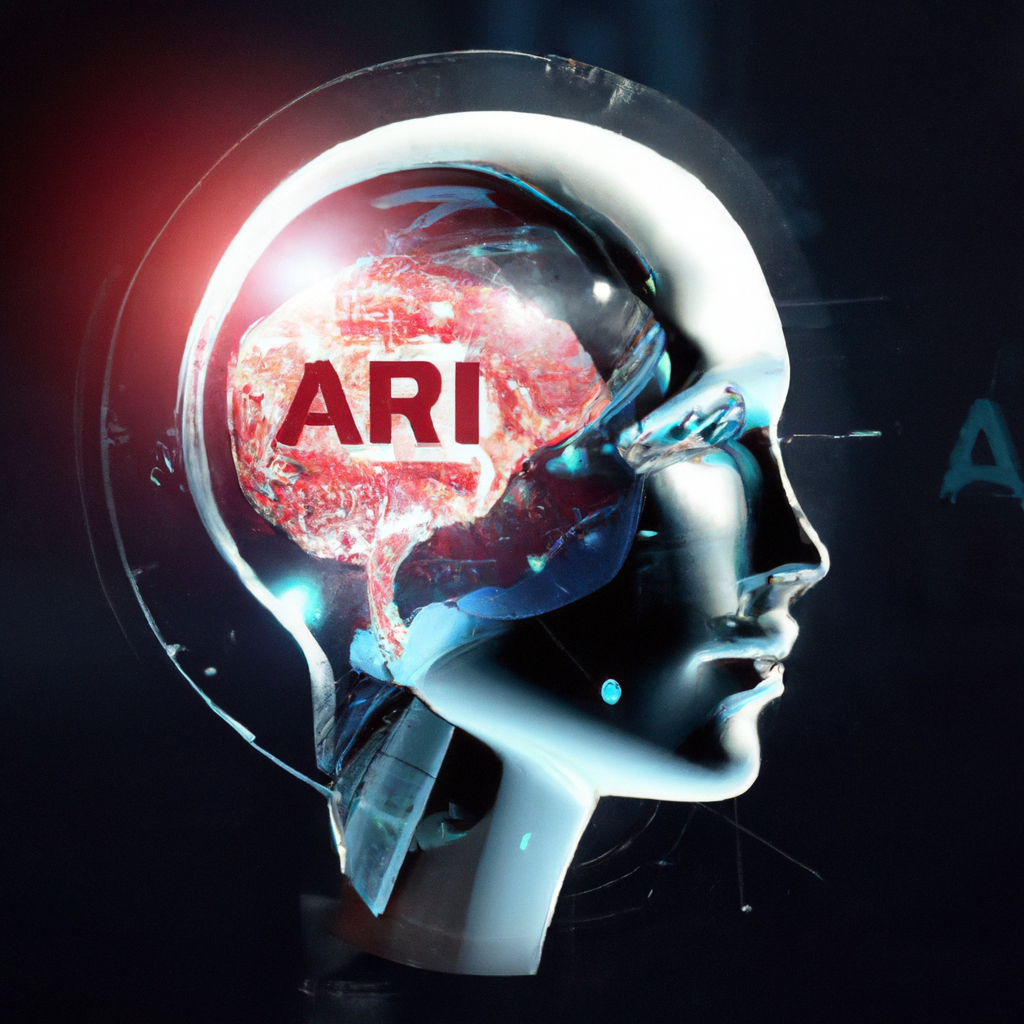AI, or Artificial Intelligence, has undoubtedly revolutionized various industries, making tasks faster, more efficient, and automated. However, as impressive as AI may be, it is essential to understand its limitations. While AI possesses exceptional computational power, it lacks the human ability of judgment and critical thinking. Although AI systems can process large amounts of data, they often struggle with understanding emotions, context, and sarcasm. Additionally, AI is limited by its dependence on data accuracy, as even a small error can significantly impact its performance. It is crucial to recognize these limitations to ensure that AI is effectively utilized while acknowledging the need for human intervention and oversight.

This image is property of images.pexels.com.
Data Limitations
Insufficient or Inaccurate Data
One of the major limitations of AI is the reliance on data for its training and decision-making processes. AI systems learn from the data they are provided, but if the data is insufficient or inaccurate, it can lead to flawed outcomes. For example, if an AI algorithm is trained on a biased dataset, it can perpetuate and amplify existing biases in its decision-making. Furthermore, if the data is incomplete or lacks diversity, the AI system may struggle to make accurate predictions or handle new, unfamiliar situations.
Data Bias
Related to the previous point, data bias is a significant concern when it comes to AI systems. As AI relies heavily on data for training, it absorbs the biases present in that data. If the data used to train an AI system contains biases based on race, gender, or any other protected characteristic, the AI system can potentially make biased decisions. This can have serious consequences, such as perpetuating discrimination or exacerbating social inequalities. It is essential to address and mitigate data bias to ensure that AI is fair and equitable.
Privacy Concerns
AI systems often require vast amounts of data to function effectively. This raises significant privacy concerns, as individuals’ personal information may be collected, stored, and used without their knowledge or consent. With AI’s capability to analyze large datasets and extract valuable insights, there is a risk of privacy breaches and unauthorized access to sensitive personal information. Striking the right balance between utilizing data for AI advancements and protecting individuals’ privacy is an ongoing challenge that needs to be addressed to build trust in AI technologies.
Computational Power Limitations
Processing Speed
Despite advancements in computational power, AI algorithms still require substantial processing time for complex tasks. Deep learning models can be computationally intensive, requiring extensive training on powerful hardware infrastructure. This can be a limitation when real-time or near-real-time decision-making is necessary, as the processing time may introduce delays. Enhancements in hardware technology and optimization techniques are required to overcome these processing speed limitations.
Storage Capacity
AI systems generate and handle enormous amounts of data, which necessitates significant storage capacity. Large datasets, trained machine learning models, and real-time data streams all contribute to the storage demands of AI. Managing and storing this data can be a costly and challenging endeavor, particularly for organizations with limited resources. Furthermore, the availability and accessibility of storage infrastructure can impact the scalability and reliability of AI systems.
Energy Consumption
The computational power required to support AI algorithms also comes with high energy consumption. Training complex AI models can be energy-intensive, resulting in a significant carbon footprint. As AI becomes more prevalent and consumes more computational resources, it is necessary to address the environmental impact of these systems. Research and development efforts are focused on optimizing AI algorithms and hardware architectures to reduce energy consumption without compromising performance.
Technology Limitations
Lack of Contextual Understanding
AI systems often struggle with understanding the context in which they operate. While AI can excel in specific tasks and domains, it may struggle to interpret and respond appropriately to nuanced or ambiguous situations. AI algorithms typically rely on patterns and correlations within the data, but they may lack the ability to understand the underlying meaning or context. This limitation can hinder AI’s effectiveness in complex decision-making scenarios that require a deeper level of understanding.
Inability to Handle Ambiguity
Ambiguity is a common challenge for AI systems. Unpredictable or uncertain situations, where multiple interpretations or possible outcomes exist, can confound AI algorithms. Unlike humans, who can perceive and navigate through ambiguous scenarios, AI struggles to handle such ambiguity effectively. This limitation can potentially impact AI applications in domains where ambiguity is prevalent, such as natural language processing, visual recognition, or social interactions.
Limited Creativity
While AI systems can perform certain tasks with remarkable efficiency, they currently lack the ability to exhibit genuine creativity. AI algorithms excel at pattern recognition and optimization but struggle to generate truly novel ideas or engage in imaginative thinking. Creative problem-solving, artistic expression, and originality are areas where human intelligence still surpasses AI. Despite advancements in AI-generated artworks or music, the essence of true creativity remains a challenging frontier for AI.
Ethical Limitations
Lack of Moral Compass
AI systems lack an innate moral compass, which can lead to ethical challenges. Without built-in ethical principles, AI algorithms may not prioritize values such as fairness, justice, or human welfare. For example, in a medical AI system, without explicit guidelines, it may prioritize cost-effectiveness over patient well-being. The absence of a moral compass implies that ethical frameworks and human oversight are crucial to ensure AI systems align with societal values and adhere to ethical standards.
Ethical Decision Making
Related to the lack of a moral compass, AI systems often rely on predefined rules and training data to make decisions. However, ethical dilemmas often involve complex trade-offs and contextual considerations that cannot be easily distilled into predefined rules. AI algorithms may struggle to navigate such ethical decision-making scenarios, resulting in potentially biased or unjust outcomes. Integrating ethical decision-making frameworks into AI systems is necessary to ensure responsible and ethical use.
Accountability Issues
Assigning accountability in AI systems presents significant challenges. While humans can be held accountable for their actions, it becomes challenging to attribute responsibility when AI is involved. AI systems may make decisions based on intricate calculations and correlations that are difficult to comprehend or explain. When negative consequences occur, determining who is liable becomes a complex issue. Clear frameworks for accountability and responsibility need to be established to address potential legal and ethical challenges.

This image is property of images.pexels.com.
Human Interaction Limitations
Inability to Show Emotions
AI currently lacks the capability to genuinely display emotions. While AI chatbots or virtual assistants can simulate empathetic responses, they do not truly experience or understand emotions. This limitation can impact interactions between AI systems and humans, particularly in contexts where emotional intelligence and sensitivity are crucial, such as counseling, therapy, or empathetic customer service. The inability to empathize or display genuine emotions can create barriers in building trust and forming authentic human connections.
Lack of Empathy
Beyond the inability to display emotions, AI systems struggle to empathize with human experiences. Empathy involves understanding and sharing the emotions and perspectives of others, a nuanced aspect of human interaction that AI currently cannot replicate. Empathy plays a significant role in various domains, such as healthcare, social work, or conflict resolution. Recognizing and addressing this limitation is necessary to ensure that AI systems do not overlook the importance of empathy in human well-being.
Difficulty in Recognizing Human Cues
AI algorithms typically excel at processing structured data, such as text or numerical values. However, they may struggle to recognize and interpret human cues such as tone of voice, body language, or non-verbal cues. These cues often convey important information in human interactions, shaping the overall understanding and effectiveness of communication. AI systems that rely solely on analyzing structured data may miss crucial context or fail to grasp the intricacies of human communication.
Unforeseen Circumstances
Unpredictable Events
Unforeseen circumstances, such as unpredictable events or situations, pose challenges for AI systems. They are typically trained on historical data and may not possess the ability to handle novel or unprecedented events. For instance, an autonomous vehicle AI system trained on existing road conditions may struggle to respond appropriately to a sudden natural disaster. Incorporating adaptability and robustness in AI systems to handle unexpected events is vital for their reliability and safety.
Unforeseen Situations
AI systems may face situations that were not anticipated during their development and training. Changes in the environment, unexpected user behaviors, or other unexpected factors can challenge the capabilities and assumptions of an AI system. These unforeseen situations can lead to unpredictable or undesirable behavior, potentially causing harm or misinformation. Ongoing monitoring, testing, and iterative improvement are necessary to address such unknown scenarios and enhance the adaptability of AI systems.
Uncertain Environments
AI systems are often deployed in uncertain or dynamic environments, where conditions or variables may change frequently. Uncertainty poses challenges for decision-making and can lead to suboptimal outcomes. For example, an AI system tasked with managing inventory may struggle when faced with sudden changes in demand or supply disruptions. Building AI systems that can navigate and thrive in uncertain environments requires robust algorithms that can handle probabilistic reasoning and adapt to changing circumstances effectively.

This image is property of images.pexels.com.
Security and Safety Concerns
Vulnerabilities to Hacking
AI systems can be vulnerable to hacking or malicious manipulation. Adversaries can exploit weaknesses in AI algorithms, inject malicious data, or manipulate input to deceive AI systems. For example, attackers can introduce subtle changes in image data to fool an AI vision system or create adversarial attacks against AI-based security measures. Securing AI systems against such threats requires robust security measures, ongoing vulnerability testing, and the incorporation of safeguards to ensure the integrity of AI algorithms and their inputs.
Autonomous Weapons
The development of autonomous weapons powered by AI raises significant security and ethical concerns. AI-driven systems with the ability to make life or death decisions without human intervention pose risks of indiscriminate harm and undermine human agency. Ensuring that AI in autonomous weapons adheres to international humanitarian laws and ethical principles is crucial to prevent the proliferation of weapons that can act without appropriate human oversight or accountability.
Safety of Dependent Systems
AI systems increasingly integrate with critical infrastructure, such as transportation, healthcare, or energy systems. The safety and reliability of these interconnected systems become paramount considerations. Errors or vulnerabilities in AI systems can have severe consequences, ranging from accidents in autonomous vehicles to disruptions in medical diagnosis. Designing AI systems with robustness, fail-safe mechanisms, and systematic testing is vital to mitigate potential risks and ensure the safety of dependent systems.
Legal and Regulatory Challenges
Privacy Regulations
As AI relies on vast amounts of data, privacy regulations play a crucial role in ensuring the appropriate collection, storage, and usage of personal information. Striking a balance between utilizing data for AI advancements and protecting individual privacy is an ongoing challenge. Establishing transparent and fair regulations that address data handling, consent, and usage rights is necessary to safeguard individuals’ privacy and maintain public trust in AI technologies.
Accountability Laws
Accountability for AI systems encompasses aspects of operational responsibility, ethical decision-making, and consequences. Traditional legal frameworks may struggle to account for the complexities of AI, requiring the development of new accountability laws and regulations. Determining who is ultimately responsible for AI outcomes and ensuring appropriate oversight and compliance with ethical guidelines are critical considerations to address legal and accountability challenges posed by AI technologies.
Liability Issues
The allocation of liability in AI systems poses challenges, particularly when AI decisions result in harm or damage. It becomes difficult to attribute blame or determine responsibility when AI algorithms are involved in decision-making. Clear guidelines and legal frameworks are necessary to address liability issues, ensuring that individuals or organizations are held accountable for the actions or consequences of their AI systems. Establishing legal precedents and regulatory frameworks can provide clarity and accountability in cases of AI-related liabilities.

Overreliance and Dependency
Loss of Human Control
As AI systems become more powerful and autonomous, there is a concern of losing human control over critical decision-making processes. Overreliance on AI systems without human oversight or intervention can lead to unforeseen consequences or ethical dilemmas. Striking a balance between leveraging AI’s capabilities while maintaining human control and judgment is essential to prevent undue reliance and ensure that AI systems align with human values and objectives.
Job Displacement
The increasing adoption of AI technologies raises concerns about job displacement and the impact on the workforce. AI has the potential to automate repetitive or routine tasks, which can lead to job losses in certain industries. However, it is essential to recognize that AI can also create new opportunities and augment human capabilities. Ensuring that the transition to AI-enhanced workplaces is managed effectively, emphasizing reskilling and upskilling programs, is necessary to mitigate the social and economic impacts of job displacement.
Limited User Understanding
AI systems may struggle to understand and accommodate the diverse needs and preferences of individual users. They tend to generalize based on patterns in the data they were trained on, potentially overlooking the unique requirements of specific users. This limitation can affect personalized recommendations, user interfaces, or customer service experiences. Continued research and development efforts are necessary to improve AI systems’ ability to understand and adapt to individual user contexts effectively.
Cost and Accessibility
High Implementation Costs
Implementing AI systems can be costly, particularly for smaller organizations or resource-constrained environments. From acquiring computational infrastructure to hiring specialized AI talent, the initial investment required for AI implementation can be a barrier. Additionally, ongoing maintenance, training, and upgrading expenses contribute to the overall cost. Addressing the cost considerations and providing affordable solutions is essential to democratize access to AI technologies and promote inclusivity.
Inequality in Access
The accessibility of AI technologies is not evenly distributed, contributing to a potential digital divide. Limited access to AI tools, resources, or infrastructure can exacerbate existing inequalities, both within and between countries or communities. Bridging this gap requires initiatives that focus on promoting accessibility, affordability, and education. Ensuring that AI technologies are accessible to all can maximize the potential benefits and prevent further disparities in digital engagement and socioeconomic opportunities.
Maintenance and Upgrading Expenses
AI systems require continuous maintenance, updates, and upgrades to remain effective and secure. The evolving nature of AI technologies necessitates keeping up with advancements, improving algorithms, and addressing vulnerabilities. These ongoing costs can pose a challenge, particularly for organizations with limited resources. Establishing sustainable models for AI maintenance, sharing best practices, and providing support for organizations are crucial to ensure the long-term viability and effectiveness of AI implementations.
In conclusion, while AI has demonstrated remarkable capabilities, it is important to recognize and address its limitations. Data limitations, computational power constraints, ethical considerations, human interaction challenges, unpredictable circumstances, security concerns, legal issues, overreliance risks, and cost factors all contribute to the complex landscape of AI limitations. To harness the true potential of AI while mitigating its limitations, ongoing research, ethical frameworks, interdisciplinary collaboration, and responsible implementation are essential. By understanding and proactively addressing these limitations, we can lay the foundation for a future where AI works in harmony with human interests and values.

